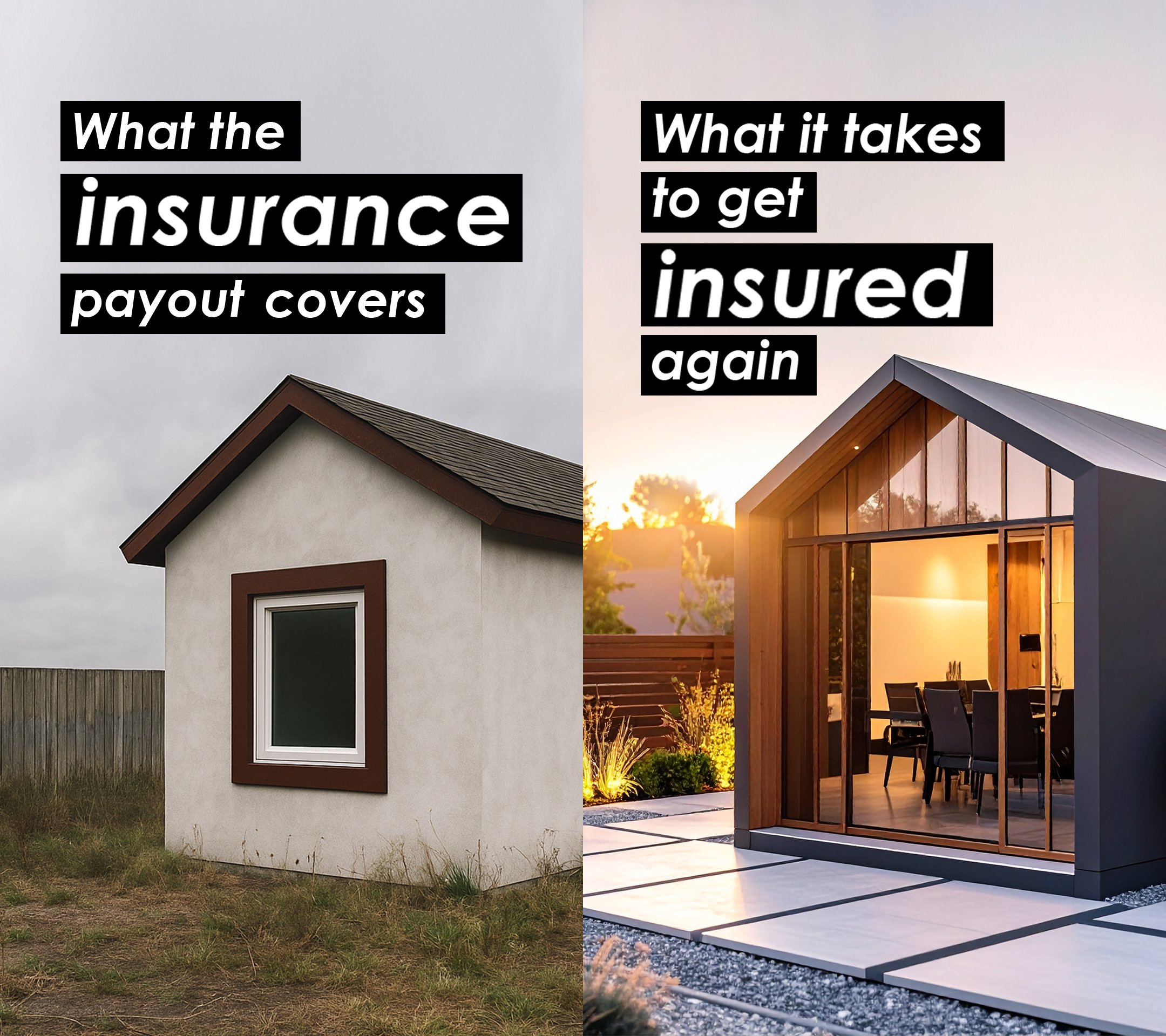Pacific Palisades: “Can We Even Get Insured?”
Voices from the Rebuild Zone
“Total confusion. Can we rebuild? How do we rebuild to get insured? We have no idea…”
Left: What insurance claim payouts might cover
Right: What locals say they need to rebuild and be insured again
→ A quiet but sharp contrast between expectation and reality
That wasn’t a theoretical question. It was expressed—calmly but urgently—by several residents during my recent volunteer work in wildfire recovery.
Their concern goes beyond claim disputes. More and more people are realizing: it’s not about fighting the insurance companies as enemies. It’s about finding a way to coexist—sharing the risk, and rebuilding in a way that restores confidence. But even with that mindset, many still ask: How do we move forward when the insurance system feels uncertain, even broken? Will our future homes even be insurable?
What the Community Is Saying
Below are the reflections and frustrations we’ve heard—straight from those affected. These aren’t policies or technical answers. They’re honest questions, hopes, and proposals from the people facing this challenge head-on.
1. Rebuild Costs vs. Insurance Payouts: Mixed Messages from Insurers
Residents are stuck between two conflicting messages—from the same insurance companies. When it’s time to make a claim, homeowners are told that $350/sqft should be enough to rebuild. But when it comes time to renew or obtain new coverage, those same companies say a basic rebuild isn’t enough. Suddenly, a higher-cost, fire-resilient design becomes the “minimum” to be considered insurable. No one knows where the bar really is—and without a clear standard, the risk lands squarely on the homeowner.
2. No Confidence, No Clarity
Residents want to meet the right standards, but no one can explain what those are. That lack of transparency is stalling progress and eroding trust.
3. The Fear of the Quick Rebuild
People are concerned that some homes already in permitting or under construction are being rebuilt too quickly, with lower-cost materials—potentially making them uninsurable in the long run. Some even urged LADBS to review applications with higher standards. While some called for building code updates, most understand it may take years. Until then, it’s on each individual to make careful choices.
4. Local Cohesion as a Strategy
Some proposed a bold idea: the community should develop its own neighborhood-wide fire resilience strategy—and present it to insurance companies as a shared standard. If approved, anyone who follows the plan could be covered. It’s ambitious, but encouraging.
5. “No More Density”
SB9 and ADU policies stirred strong concern—not just because of added density, but because they reduce setbacks, increase fire risk, and limit local control. Many expressed that state policy should be flexible enough to respond to geography, fire risk, and local planning history.
6. We Need to Understand the Cause
“What started this fire?” was asked repeatedly. Knowing the cause and showing a plan to prevent it could go a long way in restoring insurance confidence—and community peace of mind.
7. A Deep Need for Reassurance
Most of all, people want to make informed, safe choices. But right now, they're trying to rebuild without a roadmap—emotionally drained, financially stretched, and worried about the long-term future of their homes.
What Can Be Done (As Architects)
Wildfire resilience is bigger than any one profession—but architects can help. A few thoughts from our side of the table:
Design with the community in mind. Individual homes may survive, but without a resilient neighborhood, they’re not livable.
Educate and inform, without pressure. Whether we’re working with a homeowner or investor, we should speak clearly about long-term risks and insurance realities.
Support outreach without selling. Share knowledge. Don’t turn trust into marketing.
Respect the rebuilding process. People are carrying emotional and financial stress. They don’t need pressure. They need time, clarity, and care.
Final Note
This post reflects community conversations during wildfire recovery volunteer work. These aren’t policy statements—but honest concerns and reflections we believe deserve wider attention.
If you’re in Altadena or another area with similar challenges, we’d love to hear your voice. Resilience begins with shared understanding. No one should have to rebuild alone—or in the dark.

